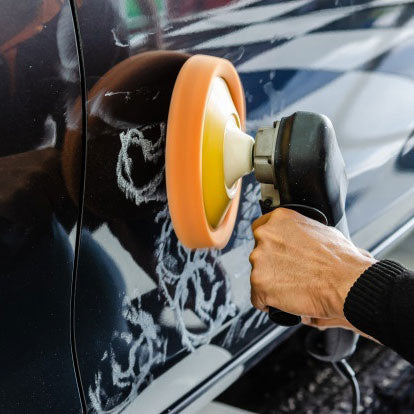For centuries, body piercings have been more than just accessories—they’re a statement of self-expression, as part of many cultures and traditions across the world. But while they undeniably add an edge to your look, not everyone’s body welcomes them with open arms. For some, metal sensitivities can turn a stylish new piercing into an itchy, irritated nightmare. If you’ve ever wondered why this happens, what causes it, and—most importantly—how to prevent or manage it, you’re in the right place.
Let us begin with what causes metal allergies/ sensitivities?

Metal allergies, also known as metal hypersensitivity, occur when the immune system identifies certain metals as harmful substances, triggering an allergic reaction. The most common culprit is nickel, a metal found in many alloys used in jewellery. When nickel or other reactive metals come into contact with the skin, the body may react by producing an inflammatory response.
People with metal sensitivities often experience the following symptoms:
- Redness and swelling around the piercing site
- Itching and irritation
- Rash or dry patches around the pierced area
- Blistering or oozing in severe cases
- Persistent discomfort or pain
These symptoms can range from mild irritation to severe dermatitis, making it essential to identify the issue early and take corrective measures.
The Role of Nickel in Metal Sensitivities

Nickel is one of the most common allergens in jewellery, particularly in cheaper or lower-quality metals. It is frequently mixed with other metals to create alloys used in earrings, body jewellery, and even watchbands. While some individuals have no reaction to nickel exposure, others develop an allergy over time due to repeated contact.
Nickel leaches into the skin when exposed to sweat or moisture, aggravating the allergic reaction more so. The body recognizes nickel ions as a foreign threat and triggers an immune response, leading to discomfort and inflammation.
This is why when picking jewellery for a new piercing it is essential that a low/ no nickel metal be used.
Although nickel is the most common offender, other metals can also cause reactions, including:
- Cobalt: Found in some alloys and plating materials.
- Copper: Present in various mixed metals, sometimes used in fashion jewellery.
- Chromium: Used in some stainless-steel blends and industrial applications.
Choosing the right metal for your piercing is crucial in preventing allergic reactions.
Here are some of the safest options:
Titanium

Titanium is one of the best metals for body jewellery, especially for those with sensitive skin. It is:
- Hypoallergenic
- Lightweight
- Highly resistant to corrosion
- Used in medical implants, making it biocompatible
Surgical-Grade Stainless Steel (316L or 316LVM)
While stainless steel contains trace amounts of nickel, high-quality surgical-grade versions minimize the risk of an allergic reaction. Look for labels specifying "implant-grade" for added safety.
Niobium

Niobium is another hypoallergenic metal with similar properties to titanium. It is often anodized to create vibrant colours without compromising safety.
Gold (14k or Higher, Solid, Not Plated)

Pure gold is less likely to cause irritation, but lower-quality gold jewellery may contain nickel or other alloys that can trigger allergies. Always opt for solid 14k or higher gold rather than plated alternatives.
Platinum

Platinum is a premium option for those prone to metal allergies. It is highly resistant to tarnishing and corrosion but is more expensive than other alternatives.
How to Determine If You Have a Metal Allergy

If you suspect you may have a metal allergy, you can:
- Consult a Dermatologist – A skin patch test can identify sensitivities to specific metals.
- Observe Previous Reactions – If you’ve experienced irritation from jewellery, watchbands, or belt buckles, you may have a metal allergy.
- Use Hypoallergenic Jewellery – Switching to titanium, niobium, or high-quality gold can help determine if your symptoms improve.
How to preventing allergic reactions to piercings

1. Choose Hypoallergenic Jewellery from the Start
Using titanium, niobium, or surgical-grade stainless steel for initial piercings minimizes the risk of a reaction.
2. Avoid Cheap or Unverified Metals
Jewellery labelled as "nickel-free" or "hypoallergenic" may still contain small amounts of allergens. Verify the material composition before purchasing.
3. Keep Piercings Clean and Dry
Regularly cleaning piercings with a saline solution can help prevent infections and irritation. Be sure to pat dry any excess moisture after cleaning
4. Monitor for Early Signs of Allergic Reactions
If redness, itching, or swelling occurs, switching to a different metal or consulting a piercer can prevent worsening symptoms.
5. Be Cautious with Coated or Plated Jewellery
Gold-plated or rhodium-coated jewellery can wear off over time, exposing underlying allergenic metals.
If you develop an allergic reaction to a piercing, follow these steps:
- Remove the Irritating Jewellery – Replace it with a hypoallergenic alternative.
- Apply a Corticosteroid Cream – Over-the-counter creams can reduce inflammation and itching.
- Use Antihistamines if Necessary – Oral antihistamines can help relieve symptoms.
- Consult a Professional if Symptoms Persist – If the reaction worsens or leads to an infection, seek medical advice.

Metal allergies should not deter you from enjoying body piercings, but awareness and preventive measures are key. Choosing hypoallergenic metals, recognizing early signs of irritation, and taking proactive care of your piercings can ensure a safe and comfortable experience. Whether you're getting your first piercing or adding to your collection, understanding metal sensitivities will help you make informed decisions and maintain healthy skin.
- Jaz Anna



